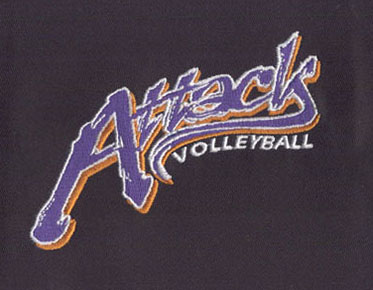Tips You Must Remember When Using Small Digitizing Embroidery Fonts|
Small embroidery fonts are a delicate embroidery technique that can create intricate and beautiful designs. However, when using small embroidery fonts, it is important to pay attention to some key points to ensure that the final embroidery quality meets your expectations. Here are 6 important things you must remember when using small embroidery fonts.
1. The impact of fabric type on small embroidery fonts
Different fabric types have different effects on small embroidery fonts. Pique knit is a thicker 3D knit with good breathability, commonly used in many sports and high-performance shirts. However, they are often called "honeycomb" weaves, and because the stitches are easy to sink into the fabric, they may be difficult to embroider. Soft and silky fabrics may also be tricky because they are less stable, and textured fabrics can distort letters. Therefore, it is best to avoid using highly unstable fabrics such as pure mesh. Remember that the more stable the fabric, the easier it is to embroider, and stable woven materials are best for small fonts.
2. When using small fonts, they must have underlay.
Here are a few things to keep in mind with underlay regarding small fonts:
a. Center-backing is best for small
fonts and can help the font fix to the top of the fabric. You can use a
serrated or edge-running backing with larger and bolder fonts.
b. A knockdown stitch is an added
backing that looks like tatami stitches and can be used to handle plush and
fluff on "interesting" fabrics and towels. But be sure not to remove
the fabric stabilizer.
c. Do not use edge running on small letters because the space between the letters is limited and cannot accommodate more backing.
3. Use Stabilizer
When using stabilizers, more stabilizers mean better splicing. We recommend using at least two layers.
4. When choosing small letter fonts, please note the following
a. Less detail usually leads to better results, especially when creating small designs. Therefore, as a general rule when choosing or preparing artwork for embroidery digitization, less detail = better result.
b. While swirls or bold fonts are often more interesting, when choosing small letter fonts, the most basic font is usually better.
c. You should choose fonts without serifs or fancy features, avoiding the use of serifs (small tails on old-style fonts), swirls, and flourishes.
d. The minimum readable font size is 4 millimeters, but some fonts may reach 3 millimeters. The smaller the size, the harder the letters are to read, so the choice should be made based on the specific situation.
5. Needle & Thread Suggestions For Small Embroidery Fonts
a. When embroidering small fonts, it is recommended to try using smaller needle sizes, as smaller needles will leave smaller holes after piercing the fabric.
b. The choice of needle also depends on the type of fabric you are using. For woven materials, it is recommended to use a sharp needle to pierce the fibers; for knit fabrics, use a ballpoint needle to pass between the fibers without cutting them.
c. The size of the embroidery thread will also affect your results. When your design becomes smaller, it is recommended to use 60 weight thread. Before embroidering the final garment, it is best to try a sample first to ensure that the effect meets expectations.
d. As a guide, use a 75/11 needle to sew letters of 5 millimeters and above; for 4-millimeter letters, you can use a 75/11 needle with 60 weight thread or a 65/9 needle.
e. We recommend that you slow down the machine speed! Taking it slowly is important. This can reduce the rebounding tension and make the stitching more even. Spending more time will bring better results.
6. Small Embroidery Font Density & Stitch Length
Here are some density and other considerations for small embroidery fonts:
a. It is recommended not to change the density of small embroidery fonts. Use the pre-programmed density of the font digitization. If the density is less than 0.25 millimeters of fabric, then the thread fixation is insufficient, and a hole will eventually form. This is like ten people playing musical chairs with only one chair.
b. You can try to slightly increase the tension compensation. This will enhance your lettering effect, but if used too much, it will also make the embroidery difficult to read.
c. It is recommended to keep the thread length at least 1 millimeter and not smaller. The stitch length should always be set to at least 1 millimeter and it is best to keep the default stitch length of the font.
d. The letter opening must be at least 1 millimeter, otherwise a hole will be cut out. These include the center of the letter, such as "e".
Not all embroidery fonts are the
same, so be sure to use high-quality embroidery fonts for the best results. If
you encounter difficulties in this regard, please feel free to contact the
staff of Eagle Digitizing, which provides 24-hour service and is happy to help
you.


